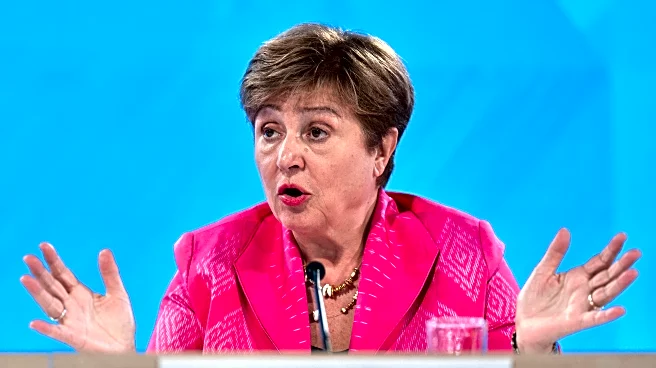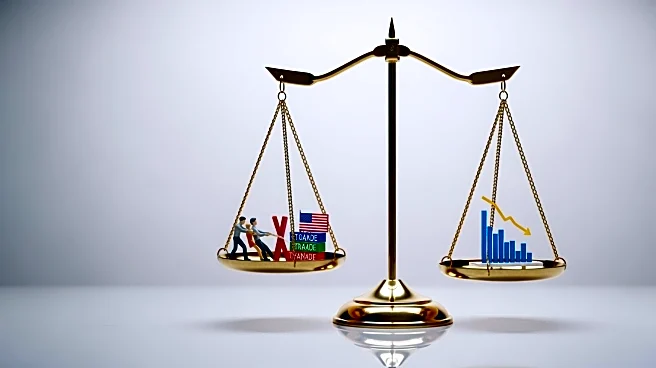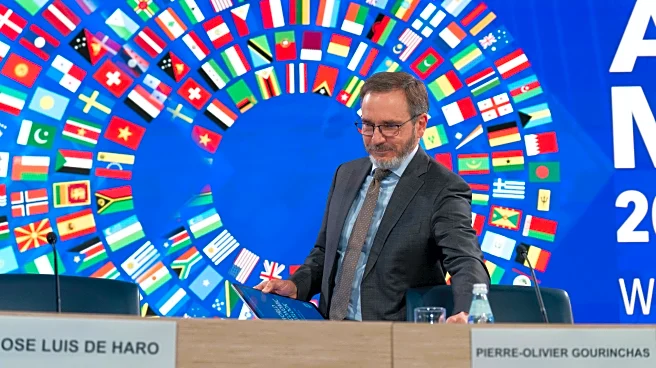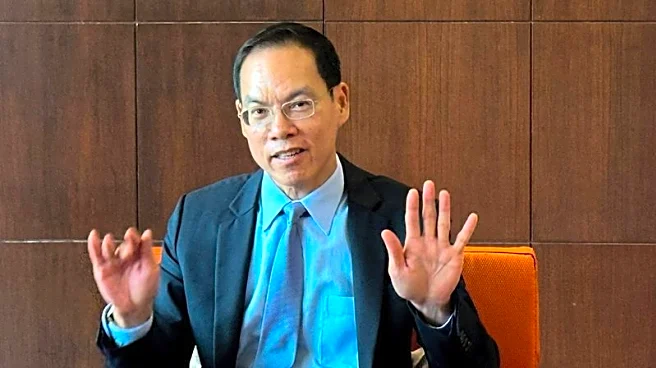What's Happening?
A study by the National Foundation for American Policy has projected that the Trump administration's stringent immigration policies could lead to a significant reduction in the U.S. workforce over the next decade. The study estimates a decrease of 6.8
million workers by 2028 and 15.7 million by 2035. This reduction is attributed to changes in legal immigration and stricter measures against illegal immigration. The anticipated drop in workforce is expected to impact the U.S. economy, potentially leading to lower economic growth and a decrease in the production of goods and services. The study also highlights that these policies could lower the projected cumulative U.S. GDP by $1.9 trillion between 2025 and 2028, and by $12.1 trillion from 2025 to 2035, while significantly raising the federal debt.
Why It's Important?
The projected reduction in the workforce due to the Trump administration's immigration policies could have far-reaching implications for the U.S. economy. A shrinking workforce may affect the country's future demographics, potentially hindering efforts to restore manufacturing jobs and attract workers in critical sectors such as healthcare, agriculture, and energy. The decrease in workforce could also contribute to inflation, as highlighted by a September 2025 report that noted a decline of over 1.2 million immigrants in the U.S. labor force from January to July. This decline has impacted various sectors and could lead to food shortages and higher prices for consumers. Additionally, the Congressional Budget Office has warned that the U.S. population growth is expected to decline at a faster rate than previously projected due to these immigration policies.
What's Next?
The study's findings suggest that the U.S. may face significant economic challenges if the projected workforce reduction materializes. Policymakers and industry leaders may need to consider strategies to mitigate the impact of these immigration policies on the economy. This could involve exploring alternative sources of labor or implementing policies to attract and retain workers in key sectors. The potential for food shortages and higher consumer prices may also prompt discussions on agricultural policy and food security. As the U.S. population growth declines, there may be increased focus on demographic trends and their implications for economic planning and social services.
Beyond the Headlines
The Trump administration's immigration policies raise ethical and cultural questions about the balance between national security and economic growth. The reduction in immigrant populations could affect cultural diversity and the social fabric of communities across the U.S. Additionally, the potential for increased federal debt and economic challenges may lead to debates on fiscal policy and government spending priorities. Long-term shifts in workforce demographics could also influence political discourse and policy decisions related to immigration and labor.















